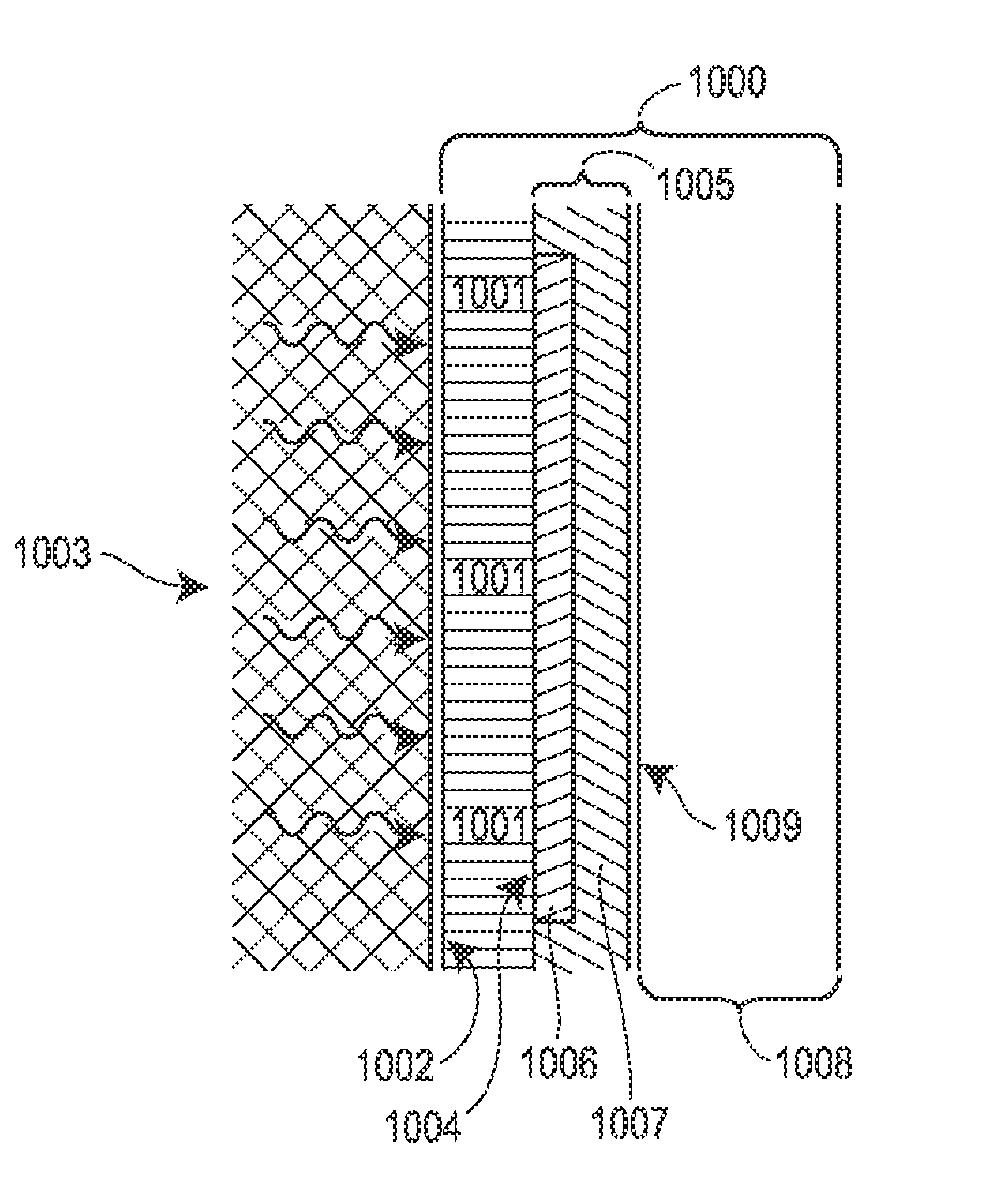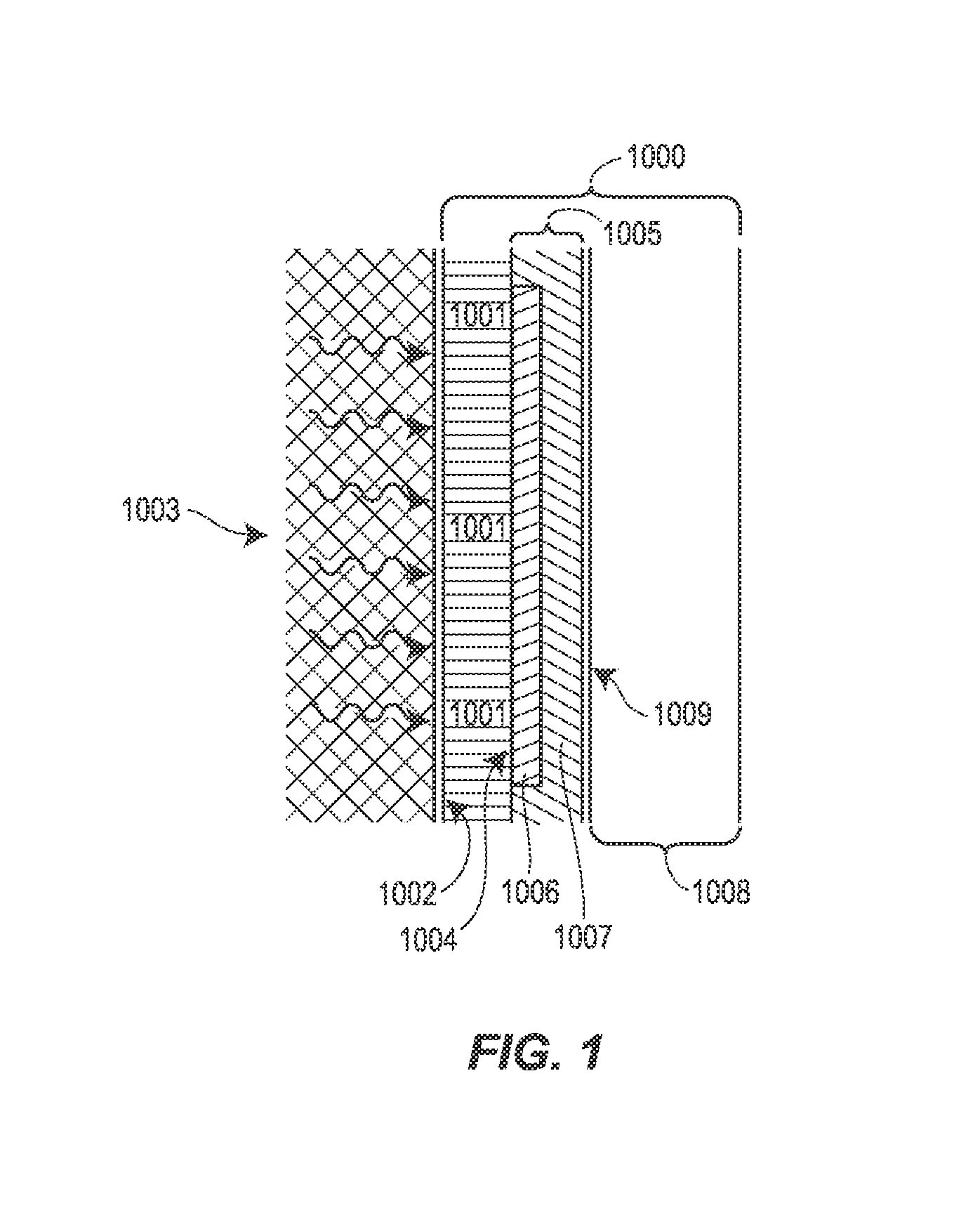Induction Welded Waterproofing
a technology of induction welding and waterproofing, which is applied in the field of subgrade waterproofing, can solve the problems of increasing installation cost, reducing installation efficiency, and requiring additional steps or equipment, so as to reduce installation efficiency, increase installation cost, and increase the time required for operating equipmen
- Summary
- Abstract
- Description
- Claims
- Application Information
AI Technical Summary
Benefits of technology
Problems solved by technology
Method used
Image
Examples
example 1
The Following Reference Numbers Correspond to FIGS. 8A to 8F
[0083]As used herein, the term “salt water” refers to aqueous solutions that contain acids, bases, and / or, preferably salts. Preferably, the salt water contains ions that for example can be H+, Na+, K+, Mg2+, Ca2+, and / or Al3+. One method for determining if a aqueous solution is salt water is through a conductivity measurement. Conductivity is a measure of the level of ion concentration of a solution. The more salts, acids or bases are dissociated, the greater the conductivity of the solution. In water or wastewater it is mainly a matter of the ions of dissolved salts, and consequently the conductivity is an index of the salt load in wastewater. The measurement of conductivity is generally expressed in S / cm (or mS / cm) which is the product of the conductance of the test solution and the geometric factor of the measuring cell. For purposes of this invention, salt water is defined as water with a conductivity greater than 15 m...
example 2
The Following Reference Numbers Correspond to FIG. 9-12
[0131]Conductivity is a measure of the level of ion concentration of a solution. The more salts, acids or bases are dissociated, the greater the conductivity of the solution. In water or wastewater it is mainly a matter of the ions of dissolved salts, and consequently the conductivity is an index of the salt load in wastewater. The measurement of conductivity is generally expressed in S / cm (or mS / cm) which is the product of the conductance of the test solution and the geometric factor of the measuring cell. For purposes of this invention, high conductivity waters are defined as waters with conductivity greater than 1 mS / cm. Conductivity can be measured using a variety of commercially available test instruments such as the Waterproof PC 300 hand-held meter made by Eutech Instruments / Oakton Instruments.
[0132]In the preferred embodiment, the partially cross-linked acrylamide / acrylate / acrylic acid copolymer is incorporated as a laye...
PUM
| Property | Measurement | Unit |
|---|---|---|
| wt. % | aaaaa | aaaaa |
| length | aaaaa | aaaaa |
| length | aaaaa | aaaaa |
Abstract
Description
Claims
Application Information
 Login to View More
Login to View More - R&D
- Intellectual Property
- Life Sciences
- Materials
- Tech Scout
- Unparalleled Data Quality
- Higher Quality Content
- 60% Fewer Hallucinations
Browse by: Latest US Patents, China's latest patents, Technical Efficacy Thesaurus, Application Domain, Technology Topic, Popular Technical Reports.
© 2025 PatSnap. All rights reserved.Legal|Privacy policy|Modern Slavery Act Transparency Statement|Sitemap|About US| Contact US: help@patsnap.com



